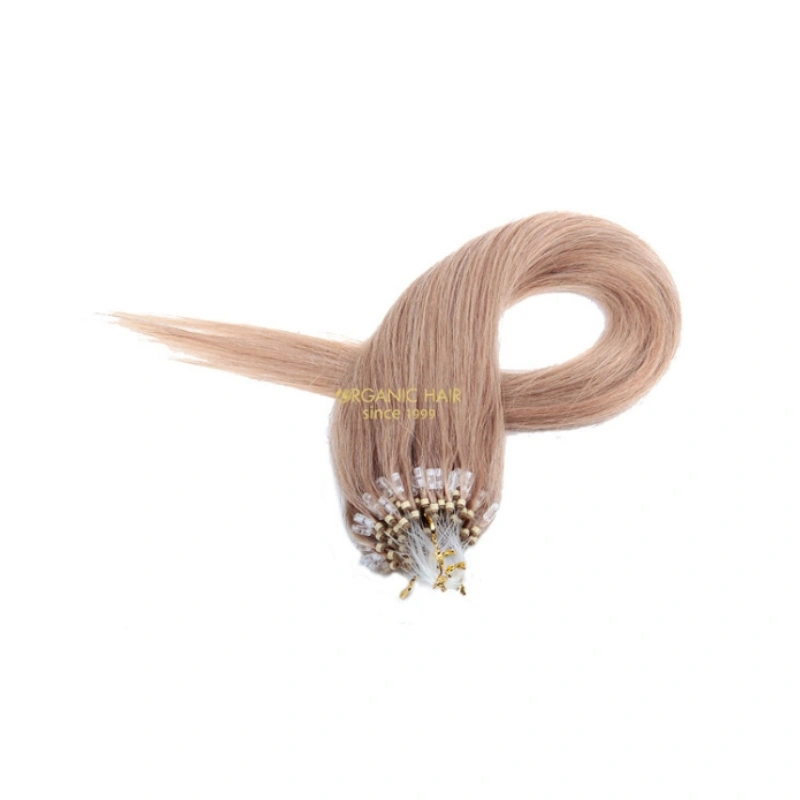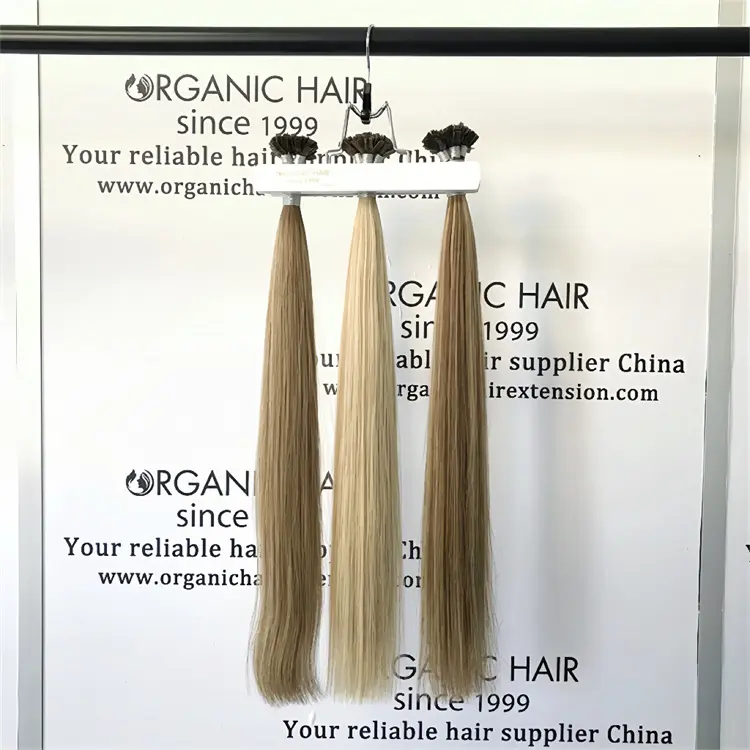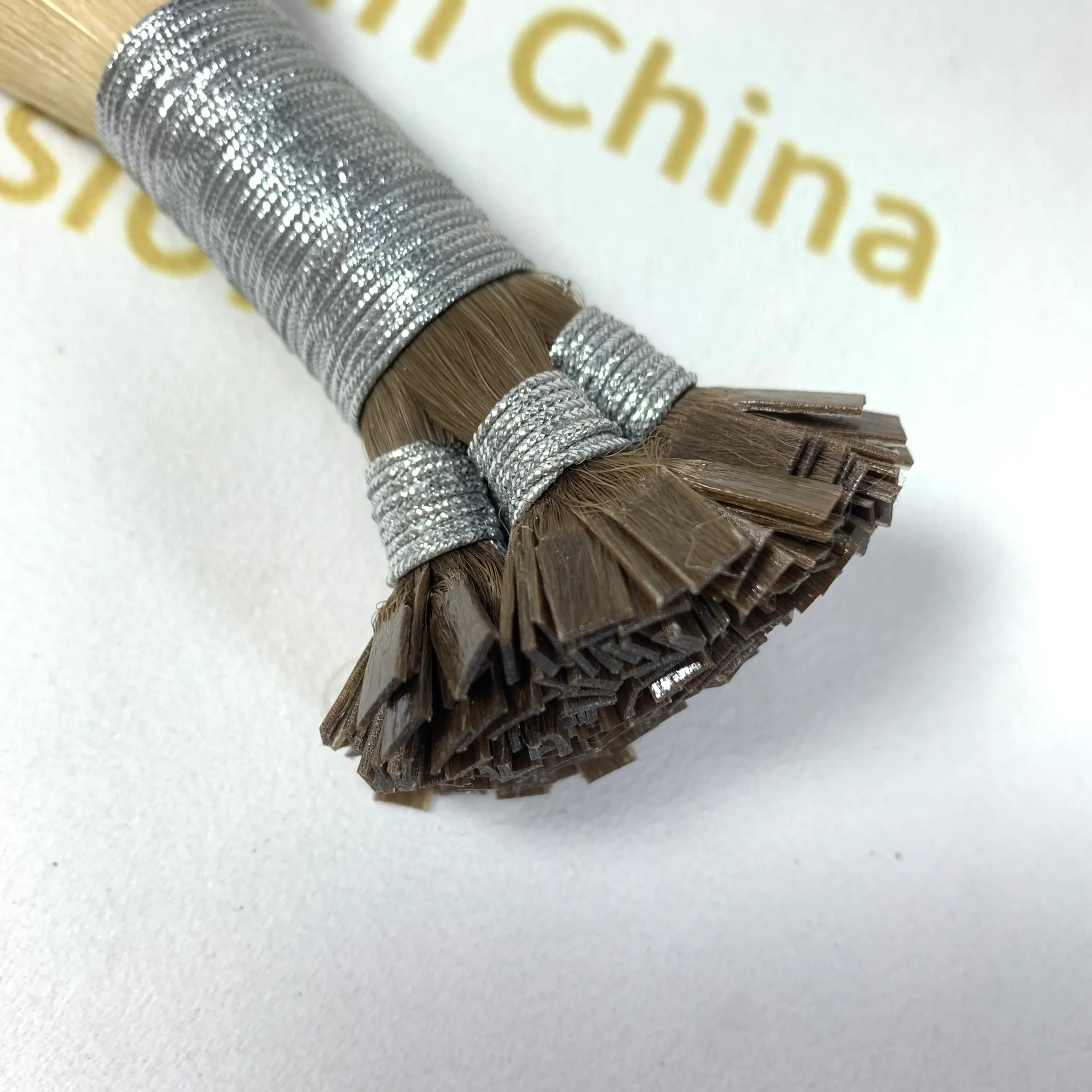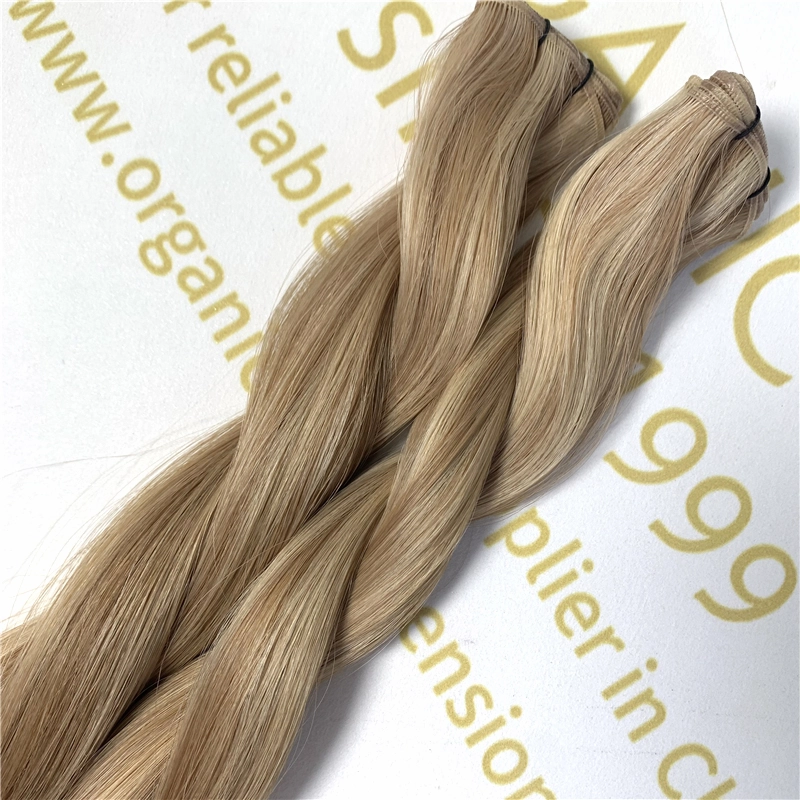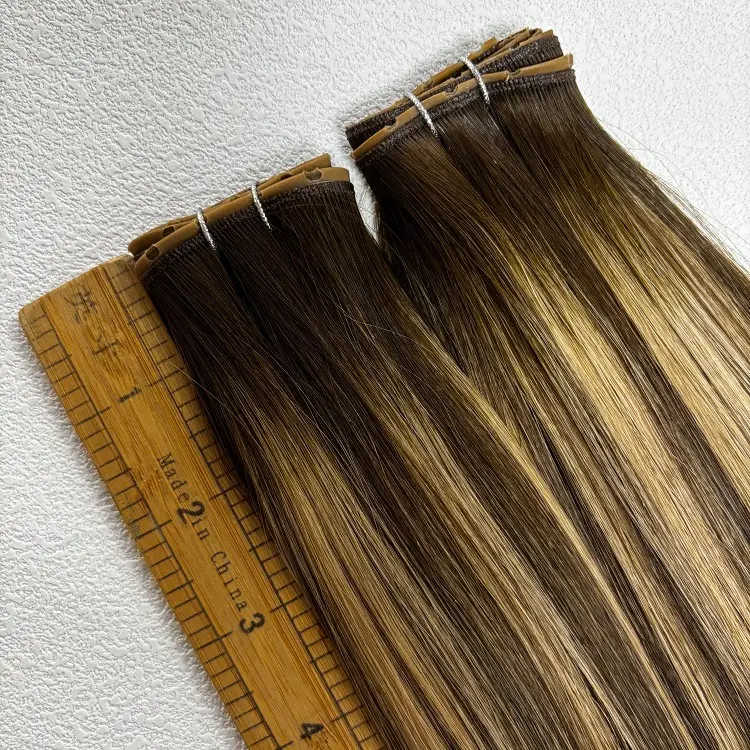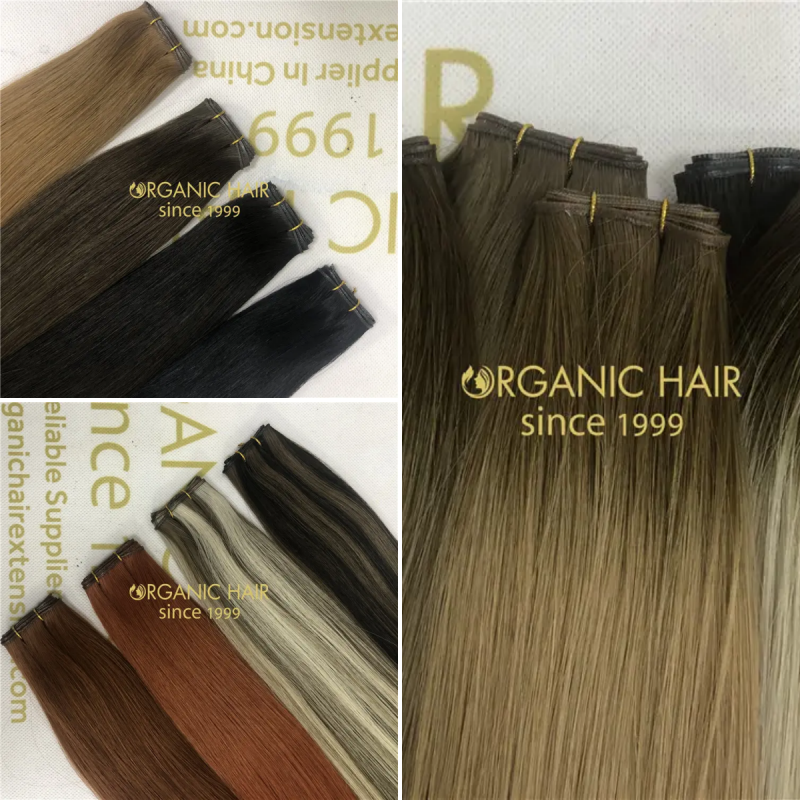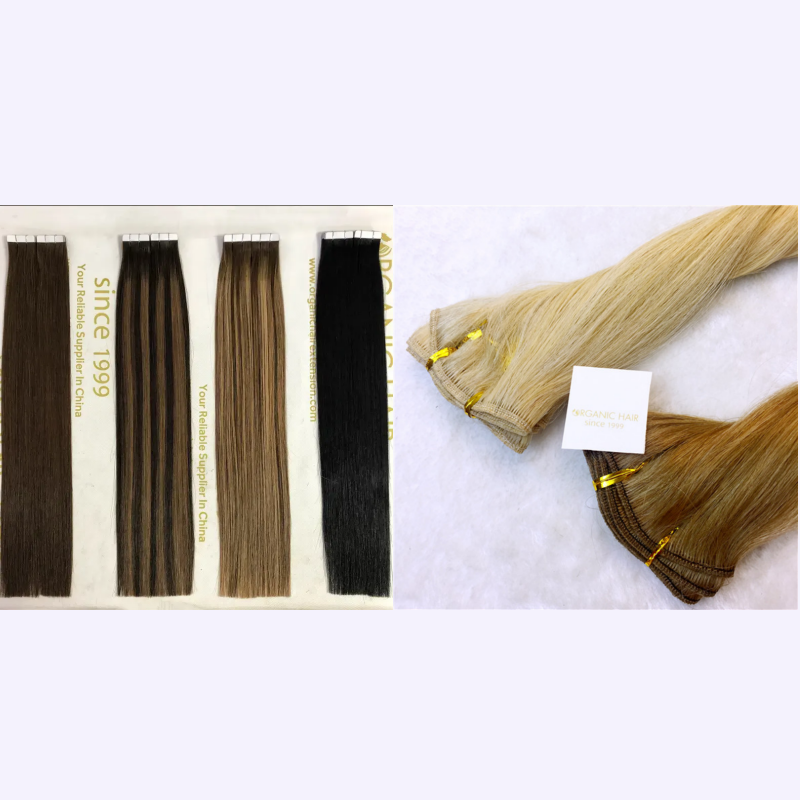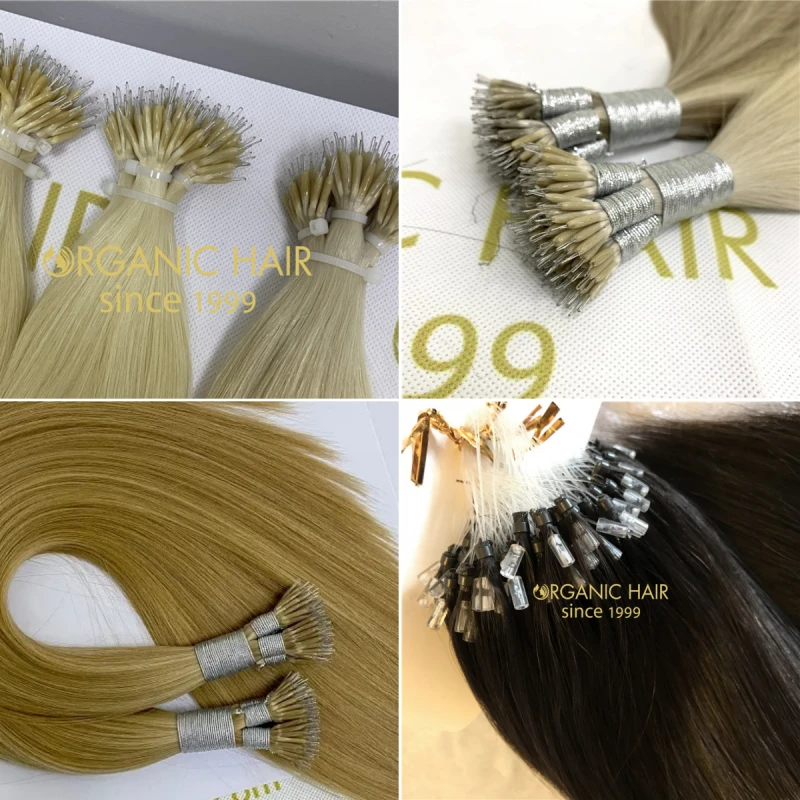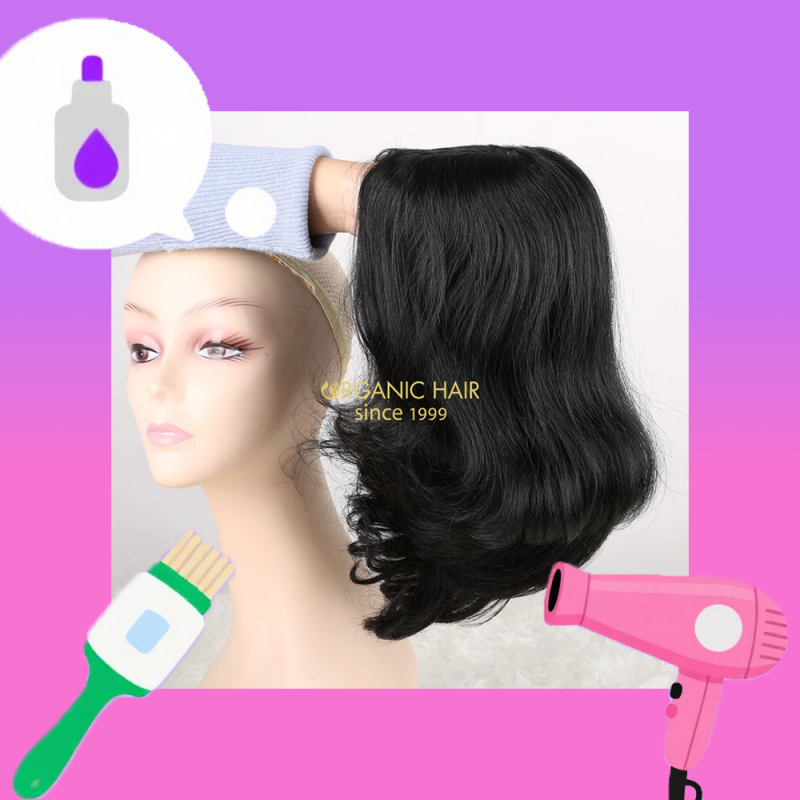Microbead hair extensions have become a popular choice for those seeking to add length, volume, or highlights without the damage caused by heat or harsh adhesives. Unlike traditional extension methods that rely on glue, tape, or heat fusion, microbead extensions use tiny metal beads to clamp small sections of natural hair, securing the extensions in place. This innovative technique provides a seamless, natural look while minimizing stress on the hair, making it a favorite among stylists and clients alike.
One of the biggest reasons for their popularity is their ability to blend effortlessly with natural hair, allowing for smooth movement and a realistic appearance. Additionally, since no heat or glue is required during application, microbead extensions are considered a gentler alternative, reducing the risk of breakage and long-term damage. They are also reusable and adjustable, meaning they can be moved up as the hair grows, extending their lifespan to about 2-4 months with proper care.
The purpose of this article is to provide a balanced, expert-backed breakdown of microbead hair extensions—highlighting their advantages, potential drawbacks, and key considerations before getting them installed. Whether you’re looking for a semi-permanent hair transformation or simply exploring extension options, understanding the pros and cons will help you make an informed decision. From maintenance tips to comparisons with other extension methods, this guide covers everything you need to know to determine if microbead extensions are right for you.
What Are Microbead Hair Extensions?
Microbead hair extensions, also known as micro-loop or micro-ring extensions, are a semi-permanent hair enhancement method that uses tiny, cylindrical metal beads to attach extensions to natural hair. These small, discreet beads—typically made of copper or silicone-coated metal—are clamped onto small sections of the wearer's hair, securing the extension strands firmly in place without the need for heat, glue, or other adhesives. This innovative attachment method makes them one of the most natural-looking and low-damage extension options available today.
How Do Microbead Hair Extensions Work?
The application process involves threading a small section of natural hair through a microbead, then inserting the tip of the extension hair into the same bead. A special tool is used to clamp the bead tightly, creating a secure hold that keeps the extension in place. Because no heat or chemicals are used, the process is gentle on the hair, reducing the risk of damage compared to methods like keratin bonding or tape-ins. The beads are small enough to remain virtually undetectable when properly installed, allowing the extensions to blend seamlessly with the natural hair.
One of the key advantages of microbead extensions is their adjustability. As the hair grows, the beads can be moved up closer to the roots during maintenance appointments (usually every 6-8 weeks), ensuring a long-lasting and natural appearance. When properly cared for, they can last between 2 to 4 months before needing a full reinstallation.
Best Candidates for Microbead Extensions
While microbead extensions are suitable for many hair types, they work best for individuals with medium to thick hair that can support the weight of the beads. Those with fine or thin hair may find that the beads cause stress on their strands, leading to potential breakage. Additionally, hair should be at least shoulder-length to ensure enough natural hair is available for secure attachment.
People with chemically treated or damaged hair should consult a stylist before getting microbead extensions, as weak hair may not hold the beads effectively. However, for those with healthy, strong hair, this method offers a durable, natural-looking solution with minimal maintenance.
Pros of Microbead Hair Extensions
Microbead hair extensions have gained popularity for their unique benefits, making them a preferred choice for those seeking a semi-permanent, natural-looking hair transformation. Below, we explore the key advantages of this extension method in detail.
1. No Heat or Glue Required
One of the most significant benefits of microbead extensions is that they require no heat, glue, or harsh chemicals for application. Unlike fusion extensions (which use keratin bonds melted with heat) or tape-ins (which rely on adhesive strips), microbeads are secured using small metal clamps. This makes them a safer, less damaging alternative, particularly for individuals concerned about heat damage or allergic reactions to adhesives.
Since the installation process doesn’t involve extreme temperatures or chemical bonding agents, the risk of weakening or breaking natural hair is significantly reduced. This makes microbeads an excellent option for those who want extensions without compromising hair health.
2. Natural Look & Movement
Microbead extensions are renowned for their seamless, undetectable finish. The tiny beads are discreetly placed close to the scalp, allowing the extensions to blend effortlessly with natural hair. Unlike clip-ins, which can sometimes appear bulky, microbeads provide a smooth, flowing look that mimics natural hair growth.
Additionally, because each extension strand is individually attached, they move freely with your hair, avoiding the stiff, unnatural feel that can come with wefts or tape-ins. This makes them ideal for those who want voluminous, realistic-looking hair that doesn’t sacrifice movement or texture.
3. Reusable & Adjustable
Another major advantage of microbead extensions is their reusability and adjustability. Since the beads are clamped rather than chemically bonded, they can be easily loosened, repositioned, or removed without damaging the extensions or natural hair.
As your hair grows (typically about ½ inch per month), the extensions can be moved up closer to the roots during maintenance appointments. This not only prolongs their lifespan but also ensures a consistently natural appearance. Many users find that with proper care, the same set of extensions can be reused multiple times, making them a cost-effective investment in the long run.
4. Long-Lasting (With Proper Care)
When maintained correctly, microbead extensions can last anywhere from 2 to 4 months—far longer than clip-ins (which are removed daily) or tape-ins (which typically last 6-8 weeks). Their durability makes them a practical choice for those who want a semi-permanent solution without frequent reapplication.
To maximize longevity, experts recommend:
Gentle brushing (using a loop brush or soft-bristle brush)
Avoiding excessive tension (tight ponytails or braids can stress the beads)
Regular maintenance (adjustments every 6-8 weeks)
5. Minimal Damage (When Installed Correctly)
Compared to other semi-permanent extensions, microbeads are among the least damaging when applied by a skilled stylist. Since they don’t rely on adhesives or heat, they put less stress on hair follicles, reducing the risk of breakage or thinning.
However, proper installation is crucial. If beads are too tight, they can strain the hair, leading to traction alopecia over time. That’s why it’s essential to have them applied by an experienced professional who knows how to distribute weight evenly and avoid excessive tension.
Final Thoughts on the Pros
Microbead extensions offer a gentle, flexible, and long-lasting way to enhance hair without the drawbacks of heat or glue. Their natural appearance, adjustability, and low-maintenance nature make them a top choice for those seeking beautiful, damage-free extensions.
Cons of Microbead Hair Extensions
While microbead extensions offer numerous benefits, they also come with some drawbacks that potential users should consider. Understanding these limitations can help you make an informed decision about whether this extension method is right for your hair type and lifestyle.
1. Potential for Hair Breakage
One of the primary concerns with microbead extensions is the risk of hair breakage, particularly if the beads are applied too tightly or placed incorrectly. The metal beads clamp directly onto natural hair strands, and excessive tension can weaken the hair over time, leading to traction alopecia (hair loss caused by pulling). This risk increases if:
The extensions are too heavy for your natural hair
Beads are positioned too close to the scalp
Adjustments aren’t made as hair grows
To minimize breakage, it’s crucial to have them installed by a professional stylist who understands proper tension and placement.
2. Not Ideal for Very Thin/Fine Hair
Microbead extensions work best on medium to thick hair because the beads need enough natural hair to grip securely. If you have fine or thin hair, the weight of the beads may cause:
Slippage (extensions loosening or falling out)
Increased stress on fragile strands, leading to breakage
Visible beads that don’t blend well with sparse hair
Those with fine hair may find tape-in or clip-in extensions a better alternative, as they distribute weight more evenly.
3. Professional Installation Recommended
Unlike clip-ins, which can be applied at home, microbead extensions require professional installation for safe and effective results. DIY attempts often lead to:
Improper bead placement, causing tangling or uneven tension
Hair damage from incorrect clamping techniques
Premature slippage if beads aren’t secured tightly enough
A stylist with experience in microbead extensions will ensure proper placement, weight distribution, and bead sizing to minimize risks.
4. Maintenance Required
Microbead extensions demand regular upkeep to remain secure and natural-looking. As your hair grows (about ½ inch per month), the beads must be moved up every 6-8 weeks to prevent:
Tangling near the roots
Uneven growth patterns
Discomfort from beads shifting downward
Skipping maintenance can lead to matting, increased breakage, and an unnatural appearance.
5. Heavier Than Some Methods
While microbeads are lightweight compared to sew-in wefts, they can still feel bulky if too many extensions are added. Users with sensitive scalps may notice:
Tension headaches from excessive weight
Pulling at the roots, especially with high-density installations
Difficulty styling if beads create uneven volume
To avoid discomfort, stylists typically recommend a moderate number of extensions tailored to your hair’s thickness.
Final Thoughts on the Cons
Microbead extensions are not a one-size-fits-all solution—they require careful consideration of hair type, maintenance commitment, and professional expertise. While they offer a natural look with minimal chemical damage, the risks of breakage, weight, and upkeep mean they may not suit everyone. Consulting with an experienced stylist can help determine if they’re the right choice for you.
Comparison with Other Extension Methods
Microbead vs. Tape-In
Tape-in extensions are known for their relatively quick and easy application process, which typically takes under an hour. However, they use adhesive to bond the extensions to the natural hair, which can weaken strands over time, especially during removal. Microbead extensions, on the other hand, don’t involve glue or heat, making them gentler on the hair shaft when installed correctly. While microbeads take longer to apply—usually 2 to 3 hours—they offer better longevity and less risk of residue build-up. For those prioritizing hair health and longer wear, microbeads may be the better choice, although tape-ins are ideal for short-term or special occasions.
Microbead vs. Clip-In
Clip-in extensions are the most user-friendly and least invasive option. They can be applied and removed daily without the help of a stylist, making them perfect for temporary changes or occasional use. However, because clip-ins are not designed for extended wear, they don’t offer the same seamless blending or natural movement that microbeads do. Microbead extensions are semi-permanent and worn continuously for weeks or months, eliminating the daily hassle of removal and reapplication. If you’re looking for a daily styling solution without long-term commitment, clip-ins win on convenience. But for a more natural, enduring look, microbeads provide superior integration.
Microbead vs. Keratin Fusion
Keratin fusion extensions involve bonding individual strands to the natural hair using heat-activated keratin glue. This method creates a very natural and durable result, often lasting 3 to 4 months. However, the heat involved in application can damage hair, especially when repeated over time. Microbead extensions avoid this risk entirely by using a no-heat, no-glue technique. Cost-wise, both options tend to be on the higher end, especially when factoring in professional application and maintenance. However, microbeads have the added benefit of being reusable, which can offset the initial investment over multiple wears. For those concerned with heat damage and looking for a reusable option, microbeads offer a more hair-friendly alternative.
Expert Tips for Maintenance & Longevity
How Often to Get Adjustments
To maintain a clean look and minimize damage, microbead extensions should be adjusted every 4 to 6 weeks. As your natural hair grows, the beads will move farther from the scalp, which can cause tangling or pulling. Regular repositioning ensures the extensions stay secure and comfortable, while also preventing strain on your roots.
Best Hair Care Practices
Proper care is crucial for maintaining the health of both your natural hair and your extensions:
Shampooing: Use sulfate-free, gentle shampoos, and avoid applying conditioner near the roots or beads, as this can cause slippage.
Brushing: Use a loop brush or wide-tooth comb designed for extensions to prevent snagging. Start at the tips and work your way up.
Sleeping: Braid your hair or tie it in a loose ponytail before bed to avoid tangling. Silk or satin pillowcases can also reduce friction and extend the life of your extensions.
Signs You Should Remove or Reposition Extensions
Pay attention to the health of your scalp and hair. If you notice significant tangling, discomfort, or beads slipping, it may be time to remove or reposition the extensions. Other red flags include hair breakage near the bead or visible gaps where the extensions have grown out too far. Ignoring these signs can lead to long-term damage.
Who Should Avoid Microbead Extensions?
People with Very Fine, Weak, or Damaged Hair
Microbead extensions require a certain level of hair strength and density to support the beads and added weight. Individuals with very fine, fragile, or previously damaged hair may experience breakage or traction alopecia due to the tension caused by the beads. In such cases, lighter alternatives like tape-ins or clip-ins may be more appropriate.
Those Unwilling to Commit to Maintenance
Microbead extensions are not a “set it and forget it” solution. They require regular salon visits, careful daily care, and periodic repositioning. If you’re not prepared to invest time and money into upkeep, these may not be the best option. Neglecting maintenance can result in damage to your natural hair and reduced lifespan of the extensions.
Final Verdict: Are Microbead Extensions Worth It?
Summary of Key Pros and Cons
Microbead hair extensions offer a range of benefits: they don’t require heat or glue, they blend naturally, and they can be reused and adjusted as your hair grows. When installed and maintained correctly, they are one of the least damaging semi-permanent options available. However, they do come with drawbacks, such as potential breakage if misapplied, higher maintenance needs, and unsuitability for very fine hair.
Best for Those Seeking Semi-Permanent, Natural-Looking Extensions
If you want longer, fuller hair with a natural finish and are willing to commit to regular upkeep, microbeads can be a fantastic option. They are particularly suited to individuals with medium to thick hair who want a long-term extension solution that allows for flexibility and reuse.
Importance of Professional Installation for Best Results
Professional installation cannot be overstated. A trained stylist will know how to section your hair properly, choose the right bead size, and place each extension in a way that minimizes stress on your strands. Attempting a DIY installation may save money upfront but can lead to costly damage in the long run.
Conclusion
Microbead hair extensions can be a game-changer for those looking to enhance their hair’s length and volume in a semi-permanent way. However, they’re not a one-size-fits-all solution. A consultation with a professional stylist is essential to assess your hair’s suitability and determine whether microbeads are the best choice for your lifestyle and hair goals. If they’re not right for you, alternatives like clip-ins, tape-ins, or halo extensions can still help you achieve your desired look without compromising hair health.
